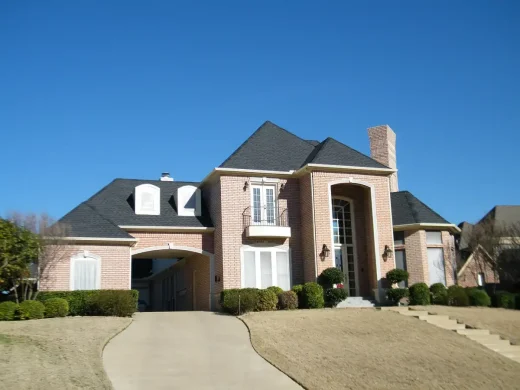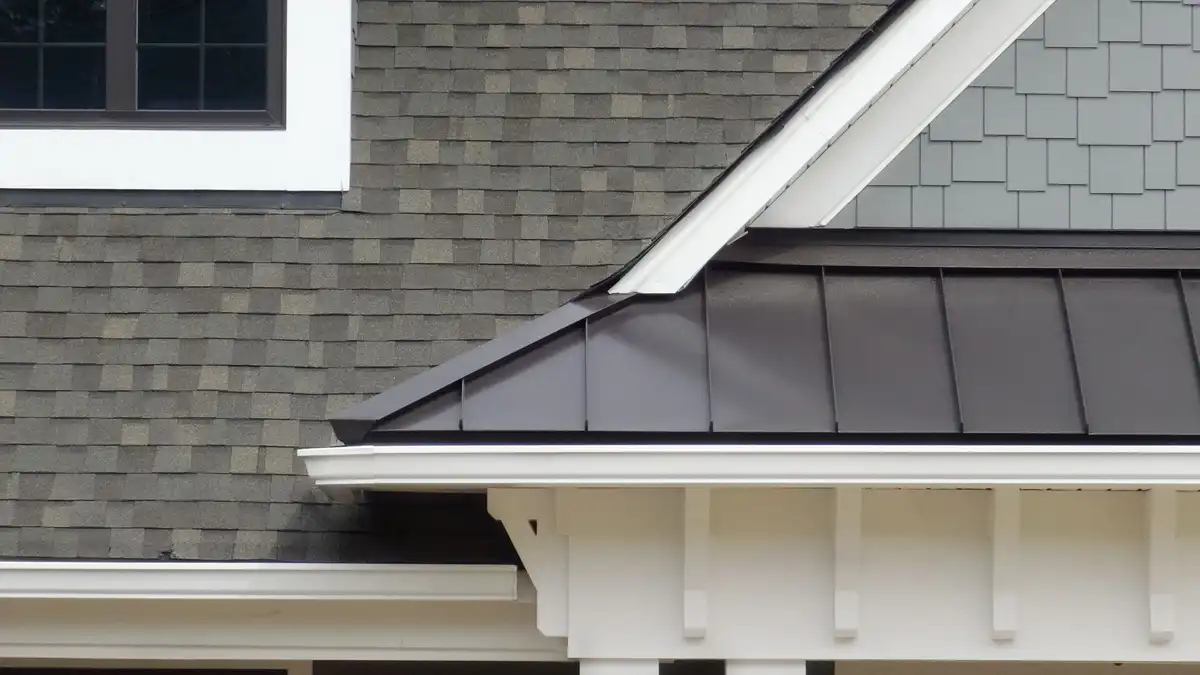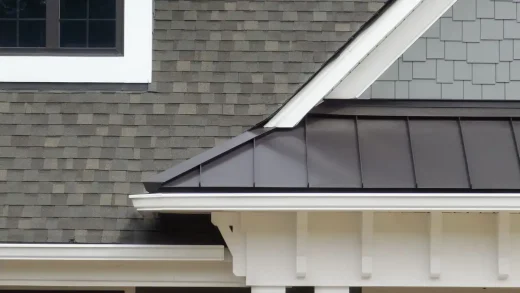Roof repair or replacement at home, House roofing professional fix service
Roof Repair or Replacement: Making the Right Choice for Your Home
13 February 2025
Deciding whether to repair or replace your roof can be daunting, especially when considering the various factors that come into play. It’s not just about fixing what’s broken; it’s about making a choice that aligns with your home’s needs and your future plans. From the age and condition of your current roof to the type of materials used, each element plays a crucial role in determining the best course of action.
Additionally, considerations such as budget constraints, energy efficiency, and even local building codes can influence your decision. By understanding these aspects, you can make an informed choice that ensures the safety, efficiency, and longevity of your home. Let’s dive into what you need to know to make the right decision for your roofing needs.
Factors to Consider When Deciding Between Roof Repair and Replacement
According to experts at Azul Roofing Solutions, several factors come into play when deciding whether to repair or replace your roof. One of the primary considerations is the age of your roof. Roofs have a typical lifespan depending on the material used; for instance, asphalt shingles generally last between 10 to 15 years, while slate roofs can endure for over a century. If your roof is nearing the end of its expected life, it might be more cost-effective to opt for a replacement rather than continuous repairs. Additionally, the extent of damage is crucial in making this decision. Minor issues like a few missing shingles might only require simple repairs, but more extensive damage could necessitate a full replacement.
The type of roofing material also significantly impacts your decision. While some materials are durable and can be repaired easily, others might not offer the same flexibility. For example, slate tiles can often be replaced individually without much hassle, whereas other materials might not blend as seamlessly with existing structures. Moreover, consider the urgency due to weather conditions; if severe weather is imminent, immediate action may be necessary to prevent further damage. Your long-term plans for your home should also influence your choice—if you plan to stay for many years, investing in a new roof could enhance energy efficiency and increase resale value. Lastly, don’t overlook building codes and budget constraints; these practical considerations will guide you in making an informed decision that aligns with both regulatory requirements and financial capabilities.
Understanding the Age and Lifespan of Your Roof
Understanding the age and lifespan of your roof is crucial when deciding between repair and replacement. The age of your roof significantly impacts its performance, as older roofs are more prone to wear and tear. Most roofing materials have a defined lifespan, which can guide you in determining when a replacement might be necessary. For instance, asphalt shingles, one of the most common roofing materials, typically last between 10 to 15 years. On the other hand, slate roofs are known for their durability and can last over 100 years if properly maintained.
When assessing whether it’s time for a replacement, consider these factors:
Visible signs of aging: Look for cracked, curled, or missing shingles.
Frequent leaks: Continuous leaks may indicate that repairs are no longer sufficient.
Moss or vegetation growth: This can be a sign of trapped moisture and potential damage.
If your roof is nearing the end of its expected lifespan or exhibits these issues, it might be time to start planning for a replacement. Not only will this ensure the safety and integrity of your home, but it can also enhance energy efficiency and curb appeal.
Assessing the Extent of Roof Damage
When it comes to assessing the extent of roof damage, it’s essential to take a thorough approach to determine whether minor repairs will suffice or if a full replacement is necessary. Start by examining the visible signs of damage. Look for missing or damaged shingles, as these can often be repaired individually without needing a complete overhaul. However, if you notice widespread issues such as sagging areas or significant water damage, these could indicate deeper structural problems that might require more extensive work.
Consider the severity and location of any leaks. Minor leaks caused by isolated issues like nail pops or small holes can typically be addressed with targeted repairs. On the other hand, if your roof has multiple leaks across different sections, this suggests systemic issues that warrant a full replacement. It’s also crucial to evaluate the condition of underlying structures like the decking; if water has penetrated beneath the surface layers, it may have compromised the integrity of your roof’s foundation. In such cases, opting for a replacement could prevent further damage and save costs in the long run.
The Impact of Roofing Material on Repair vs. Replacement Decisions
When deciding between roof repair and replacement, the type of roofing material plays a significant role. Different materials have varying lifespans and durability, which can influence your decision. For instance, slate roofs are known for their longevity, often lasting over 100 years. This makes them a candidate for repairs rather than replacement if the damage is minimal. On the other hand, more common materials like asphalt shingles typically last around 20 to 30 years. If your asphalt shingle roof is nearing the end of its lifespan, consider a full replacement rather than frequent repairs.
Moreover, each roofing material has unique characteristics that affect maintenance needs and costs. For example:
Slate: While durable, slate can be expensive to repair due to the specialized skills required.
Asphalt Shingles: These are generally cheaper to replace but may not offer the same longevity as other materials.
Metal Roofing: Known for its durability and energy efficiency, metal roofing might require fewer repairs over time.
Understanding these differences can help you make an informed decision that aligns with your budget and long-term plans for your home. Whether you’re dealing with minor damage or considering a complete overhaul, knowing how your roofing material impacts repair versus replacement decisions is crucial for maintaining your home’s integrity and value.
Urgency and Timing: When Immediate Action is Necessary
When it comes to roofing, timing can be everything. If you’re facing an impending weather event, such as a major storm or hurricane, taking immediate action on your roof is crucial. Urgent repairs or even a full replacement might be necessary to prevent further damage. Existing leaks are another red flag that shouldn’t be ignored. Water intrusion can quickly escalate, leading to more severe issues like mold growth or structural damage. In these situations, it’s essential to act swiftly to protect your home and avoid costly repairs down the line.
Ignoring these signs can lead to more extensive and expensive problems. By prioritizing urgent repairs or replacements when necessary, you not only safeguard your home but also maintain its value and integrity. Remember, proactive maintenance is always more cost-effective than reactive fixes.
Long-Term Plans for Your Home: How They Affect Your Decision
When deciding whether to repair or replace your roof, it’s essential to consider how long you plan to stay in your current home. If you’re planning on moving in the near future, opting for repairs might be a more cost-effective solution. This approach can help maintain the roof’s functionality without the significant investment of a full replacement. However, if your roof is older and has required multiple repairs, it might deter potential buyers when you decide to sell. A new roof can enhance your home’s resale value by improving its curb appeal and reducing future maintenance concerns for buyers.
On the other hand, if you’re settled in your forever home, investing in a roof replacement could be beneficial in the long run. A new roof not only provides peace of mind but also ensures that you won’t face frequent repair costs down the line. Consider these factors:
Resale Value: A new roof can make your property more attractive to potential buyers.
Long-Term Savings: Avoid repeated repair costs by investing in a durable roofing solution.
Ultimately, your decision should align with both your current needs and future plans for your home. Balancing immediate costs with long-term benefits will guide you toward the best choice for your situation.
Energy Efficiency Considerations in Roofing Decisions
When considering roofing decisions, energy efficiency is a significant factor that can lead to substantial savings over time. Modern roofing materials have evolved to offer enhanced energy efficiency, which not only helps in reducing utility bills but also contributes to a more sustainable living environment. For instance, materials like cool roofs are designed to reflect more sunlight and absorb less heat compared to traditional roofs. This can be particularly beneficial in warmer climates where air conditioning costs can soar. Additionally, options such as solar reflective shingles and green roofs provide homeowners with the opportunity to upgrade their existing roofs for better energy performance.
Investing in energy-efficient roofing solutions can also increase the overall value of your home. Homebuyers today are increasingly looking for properties that offer sustainability features, and an energy-efficient roof can be a strong selling point. Some of the popular choices include:
Cool Roofs: These are designed to reflect more sunlight and absorb less heat, keeping your home cooler during hot months.
Solar Reflective Shingles: These shingles help reduce heat absorption and can lower cooling costs.
Green Roofs: Incorporating vegetation on rooftops not only improves insulation but also enhances air quality.
By opting for these modern materials, you not only contribute to environmental conservation but also enjoy the financial benefits of reduced energy consumption. It’s worth exploring these options when planning your next roofing project.
Navigating Building Codes and Regulations
When considering roof repair or replacement, it’s crucial to understand the building codes and regulations that may affect your decision. These codes are in place to ensure safety and structural integrity, but they can also influence the cost and feasibility of your roofing project. For instance, many areas have restrictions on layering shingles. If your roof already has two layers, adding a third might not be permissible due to the additional weight it imposes on the structure. This could mean that a complete replacement is necessary rather than a simple repair.
Moreover, building codes often require thorough assessments of a roof’s structural integrity before any major work is undertaken. This means that even if you’re leaning towards repairs, you might need to conduct an inspection to ensure there are no underlying issues that could compromise the roof’s performance in the future. Understanding these regulations can help you make informed decisions and avoid potential fines or complications down the line. It’s always a good idea to consult with a professional roofer who is familiar with local codes to guide you through this process. Here are some key points to consider:
Layering Restrictions: Check if adding another layer of shingles is allowed.
Structural Assessments: Ensure your roof’s structure can support new materials.
Local Variations: Building codes can vary significantly by location.
By navigating these regulations carefully, you can ensure that your roofing project complies with all necessary standards while also meeting your personal needs and budget constraints.
Budgeting for Roof Repairs vs. Replacement
When it comes to budgeting for roof repairs versus a full replacement, it’s essential to weigh the costs and benefits of each option. Repairs are generally less expensive upfront, but they might not always be the most cost-effective solution in the long run. For instance, if your roof is nearing the end of its lifespan or has extensive damage, frequent repairs could add up quickly and exceed the cost of a new roof. On the other hand, a full replacement might seem like a significant investment initially, but it can save you money over time by reducing the need for ongoing repairs and improving energy efficiency.
For homeowners facing budget constraints, financing options can provide some relief when a replacement is necessary. Many roofing companies offer payment plans or financing solutions to help spread out the cost over time. Additionally, it’s worth exploring whether your homeowner’s insurance covers any part of the repair or replacement costs due to storm damage or other covered events. By carefully evaluating your financial situation and considering all available options, you can make an informed decision that aligns with both your immediate needs and long-term financial goals.
Summary
When you’re faced with the decision of whether to repair or replace your roof, it’s important to weigh several factors. The age of your roof is a significant consideration; older roofs nearing the end of their lifespan might be better candidates for replacement rather than frequent repairs. Additionally, the extent of damage plays a crucial role. Minor issues like missing shingles can often be fixed with simple repairs, but more extensive damage may require a full replacement. The type of roofing material also influences this decision, as some materials are easier and more cost-effective to repair than others.
Your long-term plans for your home should also guide your choice. If you plan to stay in your home for many years, investing in a new roof could improve energy efficiency and increase resale value. However, if you’re planning to move soon, repairing might be more economical. Don’t forget to consider building codes and budget constraints, as these practical aspects will help you make an informed decision that aligns with both regulatory requirements and financial capabilities. Ultimately, balancing immediate needs with future benefits will lead you to the best choice for your situation.
Comments on this guide to Why Calling Professionals Can Be Beneficial When It Comes to Roof Repairs article are welcome.
Roofing
Roofing Contractor and Build Posts
Questions to ask when choosing roofers

Long Island Roofing Contractor
FAQ about a new metal roof in Sinton, TX
Home Articles
Residential Architecture
Comments / photos for the Why Calling Professionals Can Be Beneficial When It Comes to Roof Repairs page welcome.






